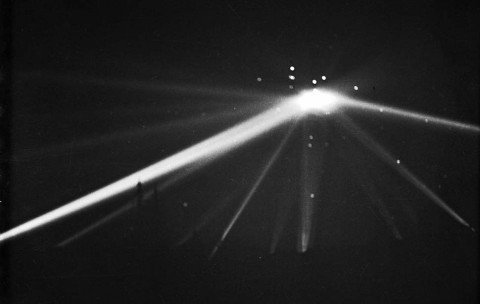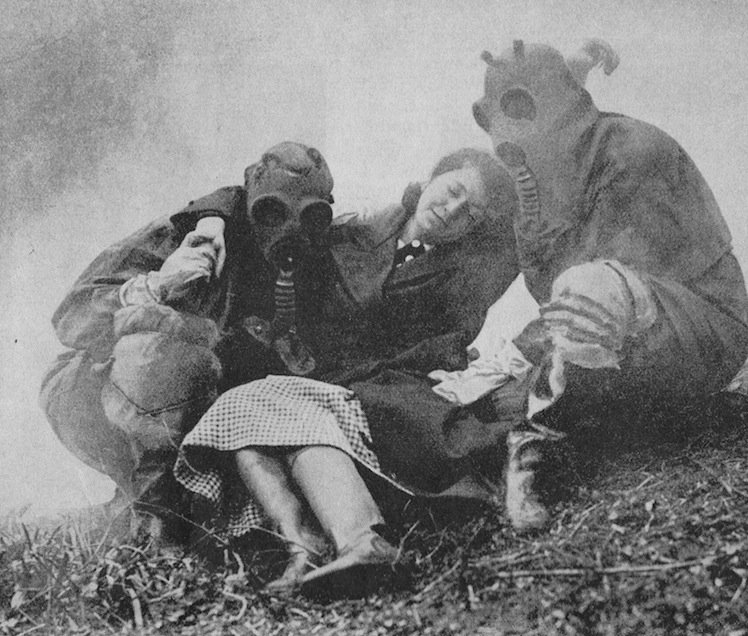On 2 June 1915, a London coronial inquest was held into the deaths on the night of 31 May of Henry Thomas Good, 49, and Caroline Good, 46. The jury returned the verdict
That the deceased died from suffocation and burns, having been murdered by some agent of a hostile force.1
That was about as far as they could go in assigning blame, as they had no direct evidence as to who the murderer was. But everyone present knew that, as the coroner said,
these two people, man and wife, who were civilians and peaceful inhabitants, had died from shock, suffocation, and burns on May 31 owing to an explosion and consequent fires created by bombs no doubt dropped by a hostile airship. They might say that some unknown agent of the hostile German Army murdered these persons, and beyond that he did not think they could go.
This was the first air raid London ever experienced, ninety-five years ago today. The coronial inquest was therefore one of the first held into air-raid deaths. (At least one other was held in London the same day, and others had taken place after the first Zeppelin attacks in January.) To hold judicial inquiries into civilian deaths due to enemy action now seems like a slightly odd practice, and indeed the practice was not continued in the Second World War (or at least was not reported). But coronial inquests into air raid deaths were common features in the British press in the First World War.
The format allowed for the airing of plenty of tragic details:
A doctor who was called to the scene stated that he found Mr. and Mrs. Good in a back room on the first floor. Both were kneeling beside the bed and were naked. All the man’s hair had been burnt off. The room was in ruins. Apart from a smell of burning, there was no smell of any chemical. The woman had a large piece of hair in her right hand.
The CORONER.–Perhaps she had snatched at her own hair in pain?–Yes.
And touching, pathetic details, too:
The witness added that the man’s arm was around the woman’s waist.
It was also a chance to get a look at the new warfare — quite literally so, in this case:
The coroner, the jury, and all in the Court leant forward eagerly when, stooping down, the constable picked up two incendiary bombs found in the basement of the house. One, he explained, had fallen through the roof and through the front rooms. The other had dropped through the roof and on to the staircase and had set fire to the stairs. The constable added that both were very heavy.
The CORONER remarked that they did not seem to be very finely finished, but apparently they were very effective. They contained an explosive called “thermit,” which was invented some years ago. It gave off enormous heat, as much as 5,000deg., and set everything on fire that it touched. It was a barbarous weapon.
Coroners were well aware that the eyes of the nation were upon them, and that they and their juries has a responsibility to avoid damaging morale:
It is not desirable, he added, to make much commotion about this matter. We do not want alarm to spread around the Metropolis, which has, up to the present, taken these acts very quietly and cooly, although we all stand in danger. It does not seem desirable to go into these matters very deeply, for the simple reason that it can do no possible good. In a case of this sort where it is impossible to get hold of the culprits, there is no good purpose to be served by it.
But equally, coroners knew that they had a unique opportunity to mould public opinion and even official policy. They could express popular outrage at the barbaric Huns:
The aeroplanes and Zeppelin airships of the Germans had created a new sphere for military genius to act in defence and attack. While armed airships, it was an entirely new and barbarous practice to use them as weapons of aggression against defenceless civilians in their beds in the undefended suburbs of our cities, seaside and health resorts, and country villages. Apparently there was a great deal of danger in attacking fortified places, so the German airships did not go to them.
And they could make recommendations on how best to thwart the air raiders:
The CORONER said there seemed to be only one argument that was of any avail. The more men that could be got to enlist the better it would be for the country.
Mapping the coronial inquests into the deaths of air raid victims over the course of the war would tell us much about how the British people learned about and responded to this ‘new and barbarous practice’.
![]() This work is licensed under a Creative Commons Attribution-NonCommercial-NoDerivatives 4.0 International License.
Permissions beyond the scope of this license may be available at http://airminded.org/copyright/.
This work is licensed under a Creative Commons Attribution-NonCommercial-NoDerivatives 4.0 International License.
Permissions beyond the scope of this license may be available at http://airminded.org/copyright/.
- The Times, 3 June 1915, 3. All quotes taken from this source. [↩]






Not apropos this particular post but just found this on the Punch website and it seemed fitting for the Zeppelin scare theme. Hope you haven’t crossed it yet:
http://www.punchcartoons.com/Science-&-Technology-Aviation-Cartoons/c56_63/p437/Cartoon-Print:-Zeppelin-Fails-to-scare-John-Bull./product_info.html
Thanks, I don’t think I have seen that one before. It puts me in mind of two things: 1) an interesting article by Henry Miller in Historical Research on ‘The problem with Punch‘ as a historical source; and 2) a previous post.